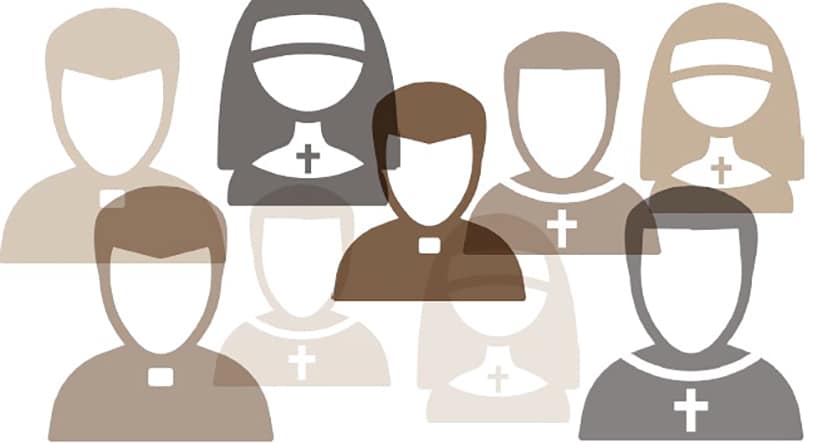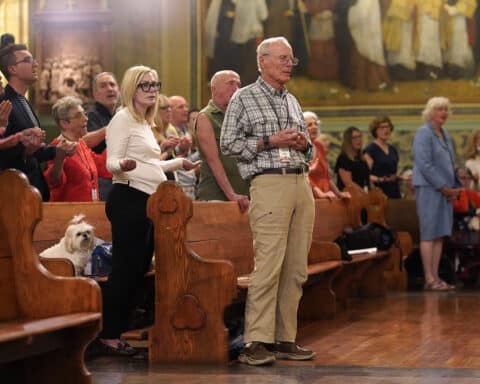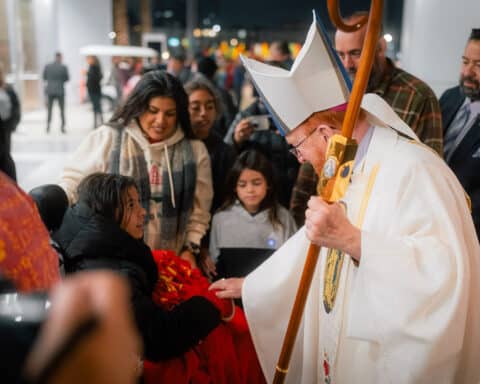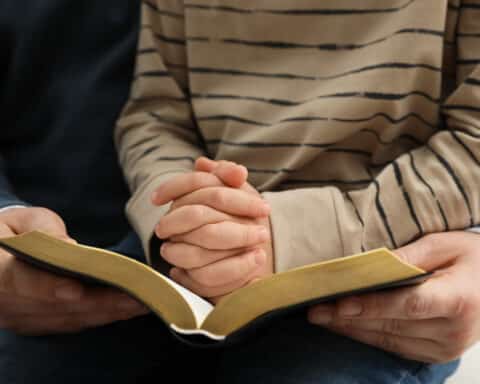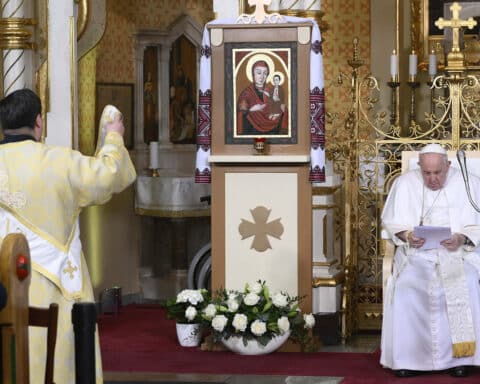The Center for Applied Research in the Apostolate, more commonly known by its acronym CARA, has kept a close eye on the trends in seminary formation and those entering religious life for many years. As the Church in the United States grows increasingly diverse, CARA’s studies of the ethnic makeup of those men and women entering religious, as well as men being ordained, help to give a sense of these trends.
Father Thomas Gaunt, S.J., is the executive director of CARA, a position he has held for the past seven years. He told Our Sunday Visitor that there has been a significant increase in the diversity of the Church in the United States, and this has been reflected in the clergy and religious. “More and more you find that those entering religious life look more like the larger Catholic population,” he said.
Surveying the landscape
At the moment, about 27 percent of all adult Catholics in the United States are foreign-born. This is a notable increase in the past 30 years; 30 years ago, this figure was only around 10 percent. “In the immigrant patterns,” Father Gaunt said, “they are often disproportionately Catholic.” He pointed out that around 60 percent of Hispanic immigrants are Catholic, and around 25-30 percent of African immigrants are Catholic. Similarly, “While India may be only 2 percent Catholic,” he said, “the immigrant stream from India is a higher proportion Catholic. The same with immigrants from Vietnam, the Philippines, Korea — very high numbers of Catholics among immigrants.” Often, proportionally speaking, the immigrants are more Catholic than their country as a whole.
According to Father Gaunt, this context is important to understand when looking at the trends of those currently in formation.
For the last three years, CARA has done annual surveys of all of the men and women entering religious life across the United States. Every year, around 500 men and women enter religious life, although each year this number may vary by around 10 percent. Over the last three years CARA has been collecting this information, there has been a steady increase, although Father Gaunt stressed that many more years’ worth of information would be needed before an adequate sense of the trends could be achieved.
Of these roughly 500 men and women, about 20 percent are foreign-born. The surveys ask questions about the responder’s age when entering religious life and how long they have been in the United States; generally, they have been in the United States for at least 10 years or more. “On average,” Father Gaunt said, “those entering who come from immigrant families came as children or teenagers, young adults, and then enter religious life as adults.” In this sense, they typically are well-adapted to the cultural landscape of the United States.
The ethnic makeup of these 500 men and women is similar to that of the wider Catholic population, according to CARA’s studies. About two-thirds are white non-Hispanic; about 11-12 percent are Asian; about 15 percent are Hispanic; about 3-4 percent are African-American. This is somewhat representative of the immigrant population, as well.
Among those who are foreign-born, the most come from Vietnam and Mexico, typically. Vietnamese-Americans create and encourage far more vocations to the religious life as compared to the size of their population, for example.
When considering the figures for final profession in religious life and ordination (for both religious and the diocesan priesthood), the numbers may be lower, but the ratios and percentage continue to have the same trend. Father Gaunt pointed out that these are numbers CARA has been tracking for significantly longer, so there is a better sense of the trends.
Increased diversity
Each year, somewhere around 200 or more make final profession in a religious order, which has been fairly consistent over the recent decades. This is about 50 percent of those who make first profession, and it tends to be split pretty evenly between men and women (although there are slightly more men).
“The challenge in religious communities,” Father Gaunt said, “is that those who have already completed all their formation — the older sisters, priests and brothers — generally tend to be overwhelmingly white and non-Hispanic.” Forty or 50 years ago, he said, many orders had a very specific ethnic appeal: They were overwhelmingly Irish-American or German-American, for example. As the communities grew more diverse, it has become necessary to proactively adjust as needed for the sake of cultural inclusion. This is just one of the realities of an increasingly diverse Church in the melting pot of the United States.
Looking at priestly ordinations, we continue to see an increase in racial and ethnic diversity over time. Each year there are around 600 ordinations — the vast majority of these in the diocesan priesthood. Looking at it year-to-year, there is a steady increase. However, there is a slow decrease in ordinations for religious orders; the diocesan ordinations make up for this with a larger increase.
About 25-30 percent of ordinations are of foreign-born men, chiefly hailing from Colombia, Mexico, the Philippines, Vietnam and Poland. Two-thirds of ordinands are white non-Hispanic; 10-15 percent tend to be Asian-American; 15 percent are Hispanic; 4 percent are African-American.
“Those who are going through the seminary and being ordained are looking more and more like the larger population,” said Father Gaunt. The trend here is that the diversity continues to increase.
Fully one-quarter of diocesan priests currently serving in the United States are what are known as “international priests.” These are men who did their seminary training elsewhere and then came to the United States. In some cases they came before ordination, but in others they are on a sort of temporary assignment by the agreement of their home bishop as well as their host bishop.
It can be a challenge for international priests to adjust to cultural norms in the United States, particularly when it comes to family life, Father Gaunt pointed out. In many dioceses where a lot of international priests serve, they will have introductory programs to help familiarize these men with American culture, and “get them up to speed for the purposes of pastoral care,” Father Gaunt said.

